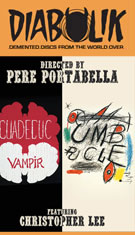
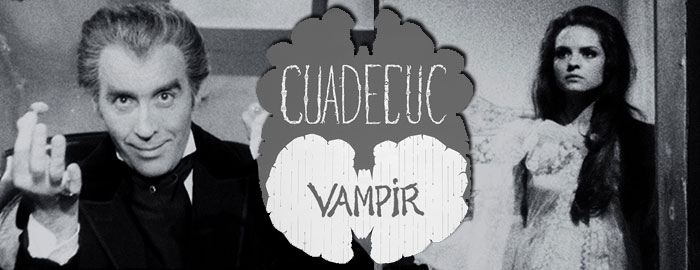
CUADECUC VAMPIR
B&W, 1971, 69 mins. 11 secs.
Directed by Pere Portabella
Starring Christopher Lee, Herbert Lom, Maria Rohm, Fred Williams, Klaus Kinski, Soledad Miranda, Jack Taylor, Paul Muller
Severin Films (Blu-ray) (US R0 HD), Second Run (Blu-ray & DVD) (UK R0 HD/PAL)
UMBRACLE
B&W, 1972, 88 mins. 23 secs.
Directed by Pere Portabella
Starring Christopher Lee
Severin Films (Blu-ray) (US R0 HD)
A prime  candidate for the most surreal making-of documentary
candidate for the most surreal making-of documentary 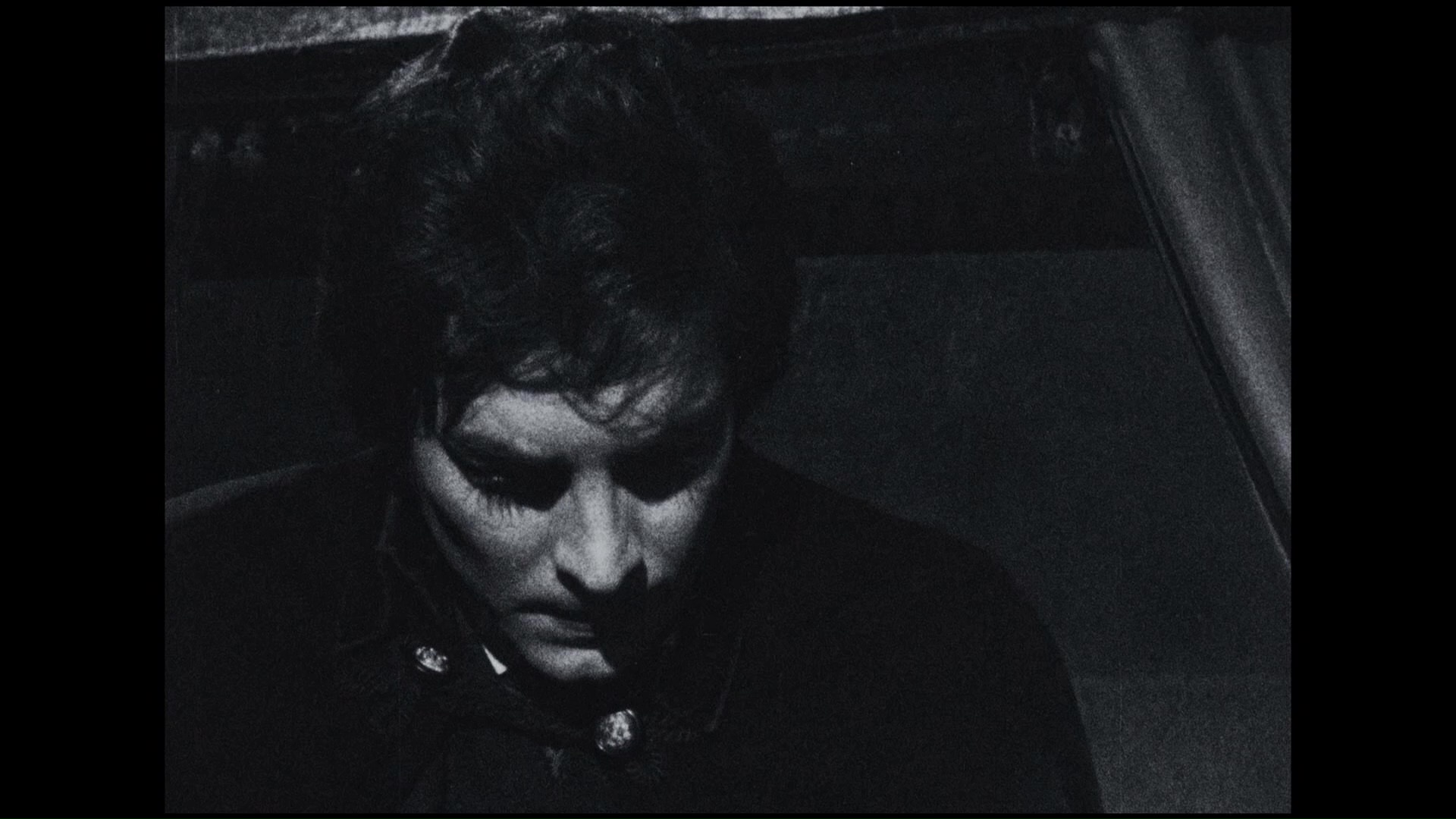 ever made, Cuadecuc Vampir (or Vampir-Cuadecuc) was shot by experimental Spanish filmmaker Pere Portabella during production of Jess Franco's much-touted and purportedly faithful Bram Stoker adaptation, Count Dracula, starring Christopher Lee and a slew of Euro-cult fixtures. A specialist in documentaries and short films, Portabella used the opportunity to film moody, grainy, black-and-white 16mm footage of the actors performing their scenes from different angles than those seen in the final film, with other scraps of coverage here and there allowing him to fashion something of a loose, dreamlike narrative flow along the way.
ever made, Cuadecuc Vampir (or Vampir-Cuadecuc) was shot by experimental Spanish filmmaker Pere Portabella during production of Jess Franco's much-touted and purportedly faithful Bram Stoker adaptation, Count Dracula, starring Christopher Lee and a slew of Euro-cult fixtures. A specialist in documentaries and short films, Portabella used the opportunity to film moody, grainy, black-and-white 16mm footage of the actors performing their scenes from different angles than those seen in the final film, with other scraps of coverage here and there allowing him to fashion something of a loose, dreamlike narrative flow along the way.
Anyone familiar with Franco's film (which was lambasted by critics for decades but has since been reappraised quite a bit) will find this a fascinating experience as the director's usual stable of actors like Soledad Miranda, Jack Taylor, Fred Williams, and Herbert Lom can be seen both in character and occasionally dropping their guard. However, it's the chance to see the stoic Lee on the set that's a real treat here. The experience is surreal as the film features no dialogue (apart from  a smidgen of Lee interview footage at the end), instead using sound effects, abstract music, and the occasional dose
a smidgen of Lee interview footage at the end), instead using sound effects, abstract music, and the occasional dose 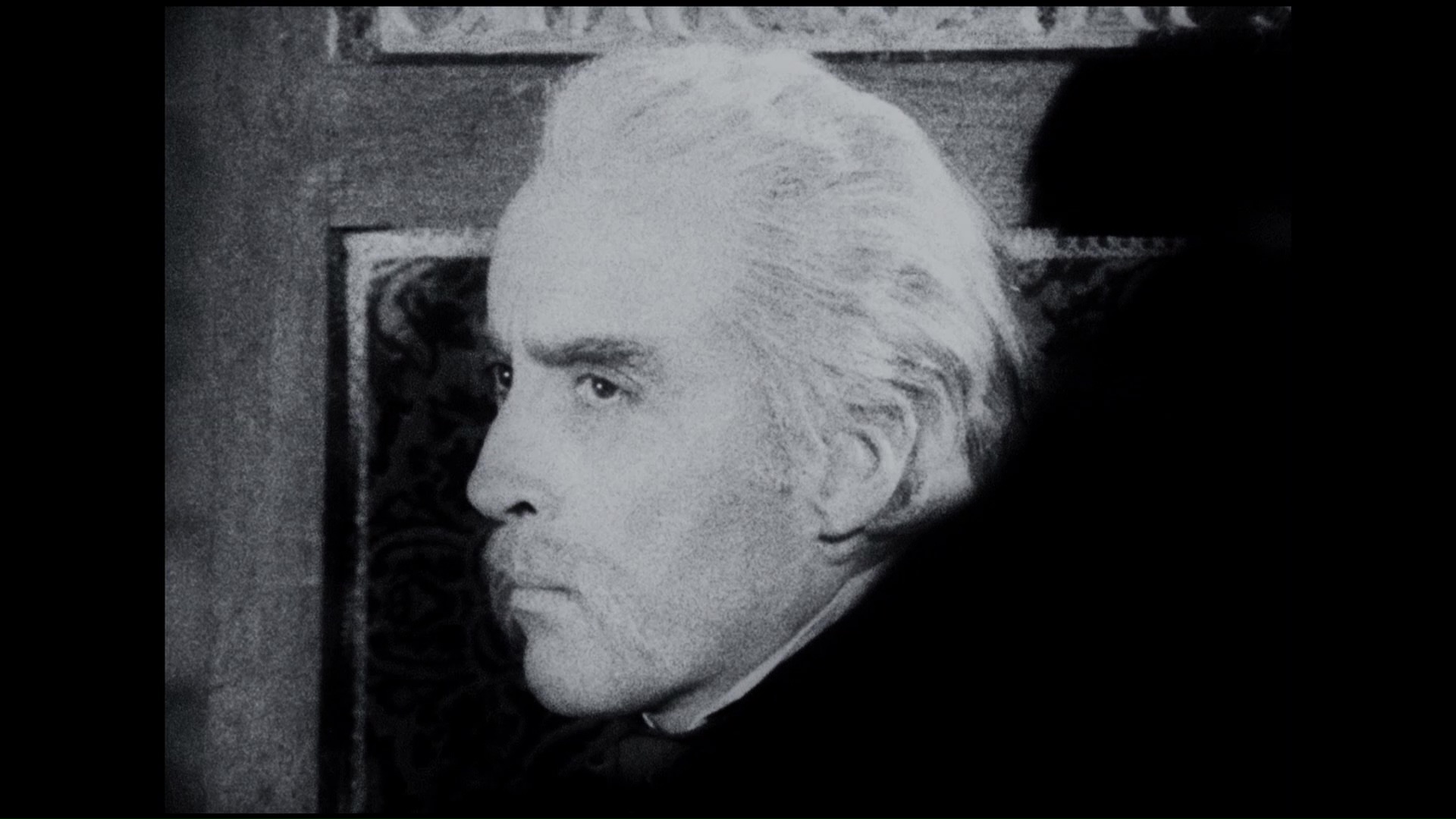 of melodic pop to create an odd soundscape quite a bit different from what you might expect from the subject matter. The camera frequently captures the filming equipment in view (with technicians sometimes glimpsed at work), and audio and occasional visuals of modern transportation add to the bizarre effect. The footage sometimes deliberately blown out or otherwise stylized to enhance the mood as well; it's really unlike anything else out there, and some even prefer it to the movie around which it is based. Plus it never gets old seeing Jack Taylor getting splashed in the face with stage blood.
of melodic pop to create an odd soundscape quite a bit different from what you might expect from the subject matter. The camera frequently captures the filming equipment in view (with technicians sometimes glimpsed at work), and audio and occasional visuals of modern transportation add to the bizarre effect. The footage sometimes deliberately blown out or otherwise stylized to enhance the mood as well; it's really unlike anything else out there, and some even prefer it to the movie around which it is based. Plus it never gets old seeing Jack Taylor getting splashed in the face with stage blood.
Cuadecec Vampir was something of a gray market curio for many years on the collector's circuit, far more often mentioned than actually seen. The film was included in SD as a bonus on Severin Films' first Count Dracula Blu-ray, but the separate U.K. Blu-ray and DVD standalone editions from Second Run in 2017 gave the film far more of a spotlight with a strong HD presentation of deliberately erratic source material. It's grainy and stylized throughout, but that said, it looks quite good and very detailed. It's worth noting that the credits here The LPCM mono track has no significant issues.
Portabella  turns up for a new video interview (29m52s) expounding on his ideas about his artistic intentions to "invade" cinema during the Generalissimo Franco fascist regime and how he wanted to create
turns up for a new video interview (29m52s) expounding on his ideas about his artistic intentions to "invade" cinema during the Generalissimo Franco fascist regime and how he wanted to create  something different out of a classical narrative, which became possible with the shooting of the Dracula feature in Barcelona. He also speaks highly of Jess, which is nice to hear. An appreciation by BFI curator William Fowler (19m36s) touches on the film's cinematic ties to early vampire films (in particular Nosferatu) and the volatile nature of film censorship at the time, with this film's Catalan title serving as a deliberate provocation. He also tries to sort out the film's temporal and narrative disorientation, something that makes it appealing for return visits. Also included are two Portabella short films, La Tempesta (5m46s) from 2003 and No al No (3m24s) from 2006, which present a silent, B&W abstraction of a shower and a highly unorthodox piano performance. Also included is a liner notes booklet with a thorough but sometimes baffling essay by Stanley Schtinter that starts off by calling Jess a "sexploitation schlemeil" and opines that "industrial cinema - the animated cadaver - perpetuates through dogma and inertia the illusion of what happens outside of itself as forced and true."
something different out of a classical narrative, which became possible with the shooting of the Dracula feature in Barcelona. He also speaks highly of Jess, which is nice to hear. An appreciation by BFI curator William Fowler (19m36s) touches on the film's cinematic ties to early vampire films (in particular Nosferatu) and the volatile nature of film censorship at the time, with this film's Catalan title serving as a deliberate provocation. He also tries to sort out the film's temporal and narrative disorientation, something that makes it appealing for return visits. Also included are two Portabella short films, La Tempesta (5m46s) from 2003 and No al No (3m24s) from 2006, which present a silent, B&W abstraction of a shower and a highly unorthodox piano performance. Also included is a liner notes booklet with a thorough but sometimes baffling essay by Stanley Schtinter that starts off by calling Jess a "sexploitation schlemeil" and opines that "industrial cinema - the animated cadaver - perpetuates through dogma and inertia the illusion of what happens outside of itself as forced and true."
In 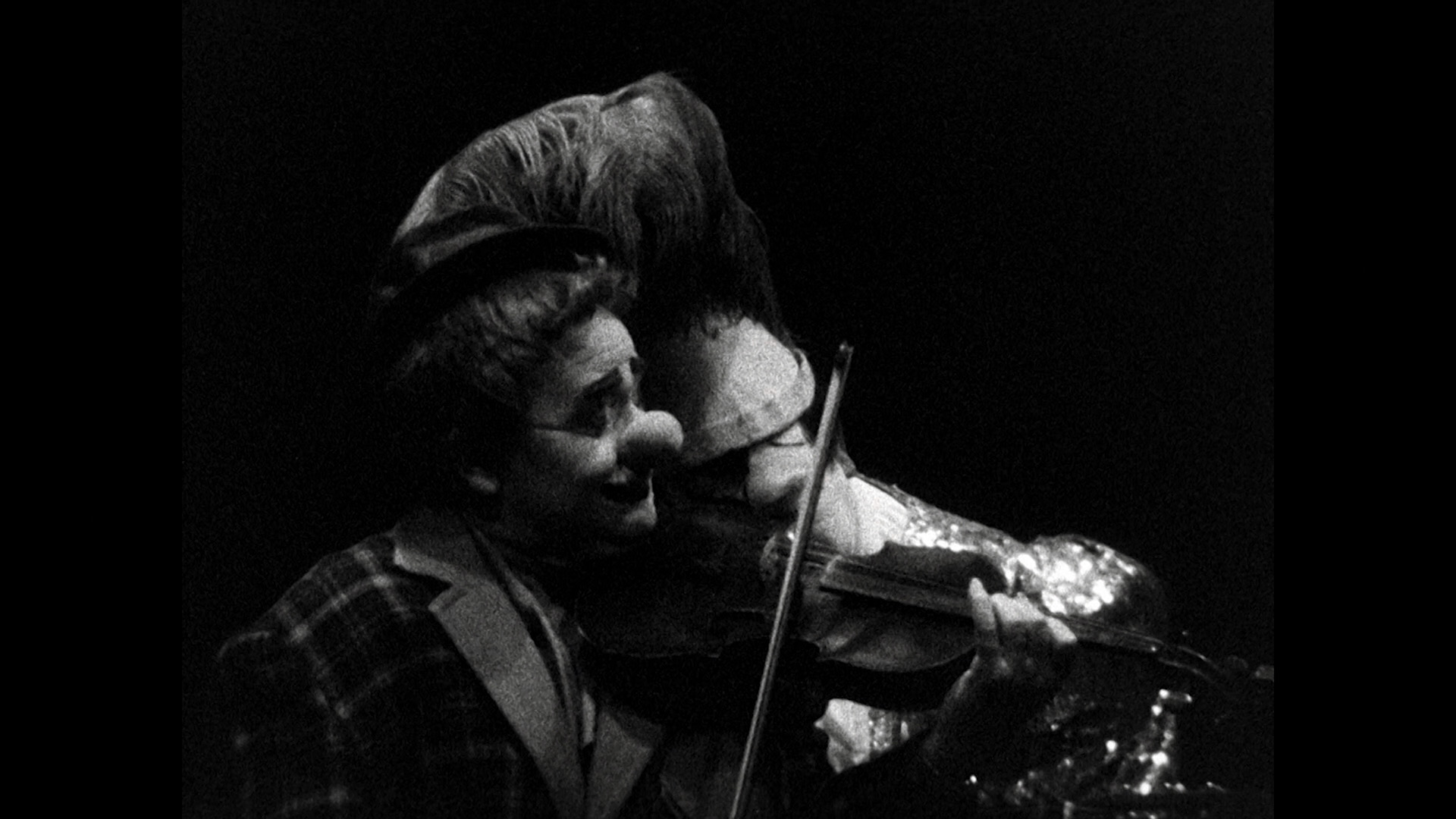 2023, Severin Films promoted Cuadecuc Vampir to its own Blu-ray release timed to coincide with the label's four-disc edition of Count Dracula, featuring the same scan overseen by the director and optional English SDH subtitles for the slivers of English dialogue in the film. This time around it's actually a double feature paired with Umbracle, Portabella's highly abstract follow-up feature with
2023, Severin Films promoted Cuadecuc Vampir to its own Blu-ray release timed to coincide with the label's four-disc edition of Count Dracula, featuring the same scan overseen by the director and optional English SDH subtitles for the slivers of English dialogue in the film. This time around it's actually a double feature paired with Umbracle, Portabella's highly abstract follow-up feature with 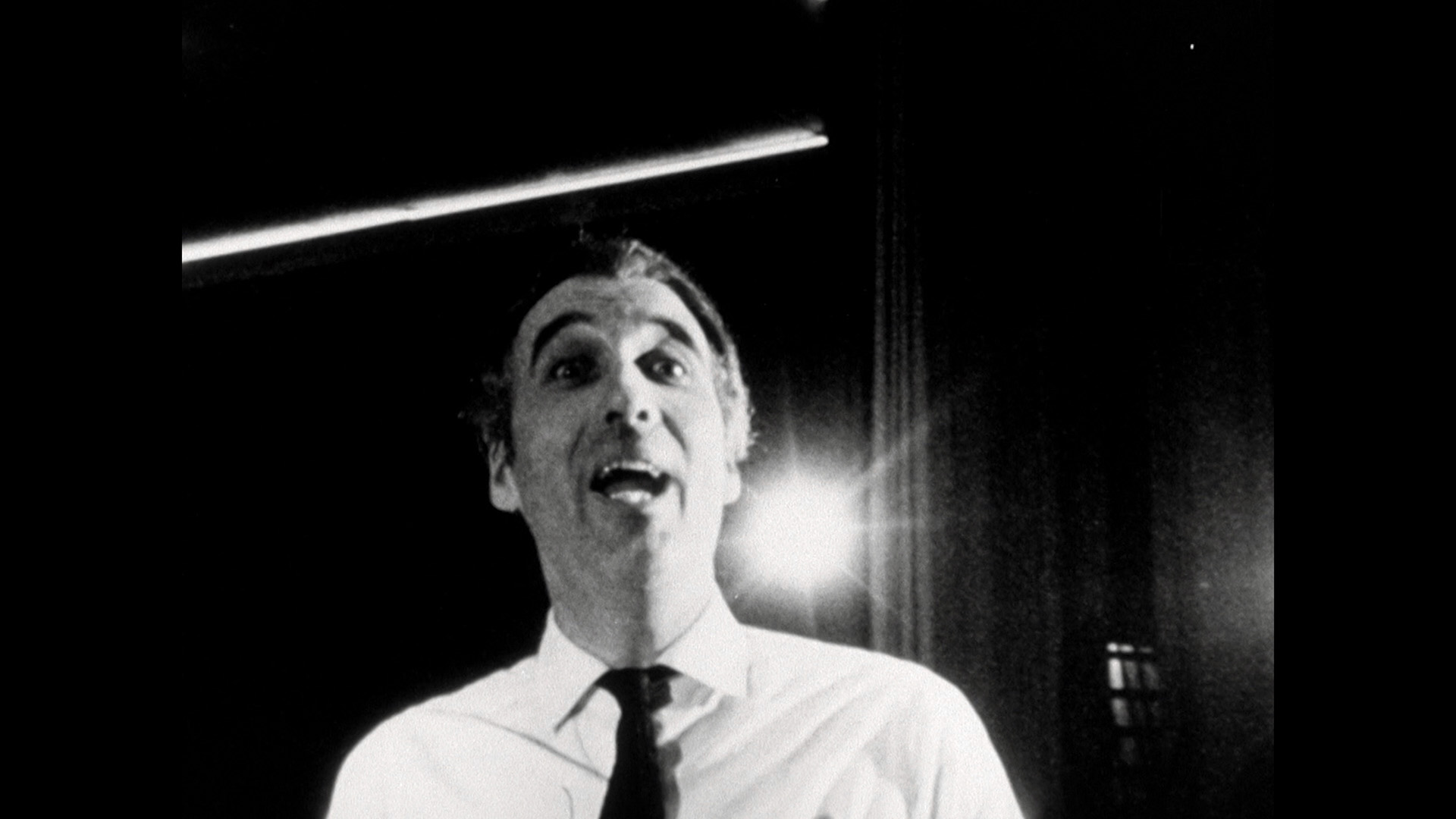 Lee returning as himself (and even performing an opera number with great gusto). Also shot in black-and-white, it has no real narrative with the Lee interludes (including a Poe recitation for good measure) alternating with discussions of Spanish censorship and contemplation about the state of the country under Franco. All of this may be too much for a lot of viewers at nearly 90 minutes, but if you're a Lee fan it's unmissable and the experimental construction does yield some jolting surprises along the way. This one is presented in Spanish (mostly) with English subtitles, with image quality comparable to its companion feature. New here is "A Cinema of Vampires: Pere Portabella, Jess Franco and the School of Barcelona" (35m40s), an interview with film scholar Dr. Álex Mendíbil exploring the conjunction of these two radically different filmmakers at a key point in time, with quite a bit about the Catalan Portabella's background and how he came to chronicle Franco's film as well as other Spanish industry points of interest like the film that got him in trouble with the Vatican. As for Franco, the analysis here is valuable as well touching on how the director's monster films often verged into the experimental themselves. A trailer for Cuadecuc Vampir is also included, and the disc comes with a booklet featuring essays by Portabella, Jonathan Rosenbaum, and Federico Karstulovich.
Lee returning as himself (and even performing an opera number with great gusto). Also shot in black-and-white, it has no real narrative with the Lee interludes (including a Poe recitation for good measure) alternating with discussions of Spanish censorship and contemplation about the state of the country under Franco. All of this may be too much for a lot of viewers at nearly 90 minutes, but if you're a Lee fan it's unmissable and the experimental construction does yield some jolting surprises along the way. This one is presented in Spanish (mostly) with English subtitles, with image quality comparable to its companion feature. New here is "A Cinema of Vampires: Pere Portabella, Jess Franco and the School of Barcelona" (35m40s), an interview with film scholar Dr. Álex Mendíbil exploring the conjunction of these two radically different filmmakers at a key point in time, with quite a bit about the Catalan Portabella's background and how he came to chronicle Franco's film as well as other Spanish industry points of interest like the film that got him in trouble with the Vatican. As for Franco, the analysis here is valuable as well touching on how the director's monster films often verged into the experimental themselves. A trailer for Cuadecuc Vampir is also included, and the disc comes with a booklet featuring essays by Portabella, Jonathan Rosenbaum, and Federico Karstulovich.
Updated review on December 21, 2023



 candidate for the most surreal making-of documentary
candidate for the most surreal making-of documentary  ever made, Cuadecuc Vampir (or Vampir-Cuadecuc) was shot by experimental Spanish filmmaker Pere Portabella during production of Jess Franco's much-touted and purportedly faithful Bram Stoker adaptation, Count Dracula, starring Christopher Lee and a slew of Euro-cult fixtures. A specialist in documentaries and short films, Portabella used the opportunity to film moody, grainy, black-and-white 16mm footage of the actors performing their scenes from different angles than those seen in the final film, with other scraps of coverage here and there allowing him to fashion something of a loose, dreamlike narrative flow along the way.
ever made, Cuadecuc Vampir (or Vampir-Cuadecuc) was shot by experimental Spanish filmmaker Pere Portabella during production of Jess Franco's much-touted and purportedly faithful Bram Stoker adaptation, Count Dracula, starring Christopher Lee and a slew of Euro-cult fixtures. A specialist in documentaries and short films, Portabella used the opportunity to film moody, grainy, black-and-white 16mm footage of the actors performing their scenes from different angles than those seen in the final film, with other scraps of coverage here and there allowing him to fashion something of a loose, dreamlike narrative flow along the way.  a smidgen of Lee interview footage at the end), instead using sound effects, abstract music, and the occasional dose
a smidgen of Lee interview footage at the end), instead using sound effects, abstract music, and the occasional dose  of melodic pop to create an odd soundscape quite a bit different from what you might expect from the subject matter. The camera frequently captures the filming equipment in view (with technicians sometimes glimpsed at work), and audio and occasional visuals of modern transportation add to the bizarre effect. The footage sometimes deliberately blown out or otherwise stylized to enhance the mood as well; it's really unlike anything else out there, and some even prefer it to the movie around which it is based. Plus it never gets old seeing Jack Taylor getting splashed in the face with stage blood.
of melodic pop to create an odd soundscape quite a bit different from what you might expect from the subject matter. The camera frequently captures the filming equipment in view (with technicians sometimes glimpsed at work), and audio and occasional visuals of modern transportation add to the bizarre effect. The footage sometimes deliberately blown out or otherwise stylized to enhance the mood as well; it's really unlike anything else out there, and some even prefer it to the movie around which it is based. Plus it never gets old seeing Jack Taylor getting splashed in the face with stage blood.  turns up for a new video interview (29m52s) expounding on his ideas about his artistic intentions to "invade" cinema during the Generalissimo Franco fascist regime and how he wanted to create
turns up for a new video interview (29m52s) expounding on his ideas about his artistic intentions to "invade" cinema during the Generalissimo Franco fascist regime and how he wanted to create  something different out of a classical narrative, which became possible with the shooting of the Dracula feature in Barcelona. He also speaks highly of Jess, which is nice to hear. An appreciation by BFI curator William Fowler (19m36s) touches on the film's cinematic ties to early vampire films (in particular Nosferatu) and the volatile nature of film censorship at the time, with this film's Catalan title serving as a deliberate provocation. He also tries to sort out the film's temporal and narrative disorientation, something that makes it appealing for return visits. Also included are two Portabella short films, La Tempesta (5m46s) from 2003 and No al No (3m24s) from 2006, which present a silent, B&W abstraction of a shower and a highly unorthodox piano performance. Also included is a liner notes booklet with a thorough but sometimes baffling essay by Stanley Schtinter that starts off by calling Jess a "sexploitation schlemeil" and opines that "industrial cinema - the animated cadaver - perpetuates through dogma and inertia the illusion of what happens outside of itself as forced and true."
something different out of a classical narrative, which became possible with the shooting of the Dracula feature in Barcelona. He also speaks highly of Jess, which is nice to hear. An appreciation by BFI curator William Fowler (19m36s) touches on the film's cinematic ties to early vampire films (in particular Nosferatu) and the volatile nature of film censorship at the time, with this film's Catalan title serving as a deliberate provocation. He also tries to sort out the film's temporal and narrative disorientation, something that makes it appealing for return visits. Also included are two Portabella short films, La Tempesta (5m46s) from 2003 and No al No (3m24s) from 2006, which present a silent, B&W abstraction of a shower and a highly unorthodox piano performance. Also included is a liner notes booklet with a thorough but sometimes baffling essay by Stanley Schtinter that starts off by calling Jess a "sexploitation schlemeil" and opines that "industrial cinema - the animated cadaver - perpetuates through dogma and inertia the illusion of what happens outside of itself as forced and true." 2023, Severin Films promoted Cuadecuc Vampir to its own Blu-ray release timed to coincide with the label's four-disc edition of Count Dracula, featuring the same scan overseen by the director and optional English SDH subtitles for the slivers of English dialogue in the film. This time around it's actually a double feature paired with Umbracle, Portabella's highly abstract follow-up feature with
2023, Severin Films promoted Cuadecuc Vampir to its own Blu-ray release timed to coincide with the label's four-disc edition of Count Dracula, featuring the same scan overseen by the director and optional English SDH subtitles for the slivers of English dialogue in the film. This time around it's actually a double feature paired with Umbracle, Portabella's highly abstract follow-up feature with  Lee returning as himself (and even performing an opera number with great gusto). Also shot in black-and-white, it has no real narrative with the Lee interludes (including a Poe recitation for good measure) alternating with discussions of Spanish censorship and contemplation about the state of the country under Franco. All of this may be too much for a lot of viewers at nearly 90 minutes, but if you're a Lee fan it's unmissable and the experimental construction does yield some jolting surprises along the way. This one is presented in Spanish (mostly) with English subtitles, with image quality comparable to its companion feature. New here is "A Cinema of Vampires: Pere Portabella, Jess Franco and the School of Barcelona" (35m40s), an interview with film scholar Dr. Álex Mendíbil exploring the conjunction of these two radically different filmmakers at a key point in time, with quite a bit about the Catalan Portabella's background and how he came to chronicle Franco's film as well as other Spanish industry points of interest like the film that got him in trouble with the Vatican. As for Franco, the analysis here is valuable as well touching on how the director's monster films often verged into the experimental themselves. A trailer for Cuadecuc Vampir is also included, and the disc comes with a booklet featuring essays by Portabella, Jonathan Rosenbaum, and Federico Karstulovich.
Lee returning as himself (and even performing an opera number with great gusto). Also shot in black-and-white, it has no real narrative with the Lee interludes (including a Poe recitation for good measure) alternating with discussions of Spanish censorship and contemplation about the state of the country under Franco. All of this may be too much for a lot of viewers at nearly 90 minutes, but if you're a Lee fan it's unmissable and the experimental construction does yield some jolting surprises along the way. This one is presented in Spanish (mostly) with English subtitles, with image quality comparable to its companion feature. New here is "A Cinema of Vampires: Pere Portabella, Jess Franco and the School of Barcelona" (35m40s), an interview with film scholar Dr. Álex Mendíbil exploring the conjunction of these two radically different filmmakers at a key point in time, with quite a bit about the Catalan Portabella's background and how he came to chronicle Franco's film as well as other Spanish industry points of interest like the film that got him in trouble with the Vatican. As for Franco, the analysis here is valuable as well touching on how the director's monster films often verged into the experimental themselves. A trailer for Cuadecuc Vampir is also included, and the disc comes with a booklet featuring essays by Portabella, Jonathan Rosenbaum, and Federico Karstulovich.